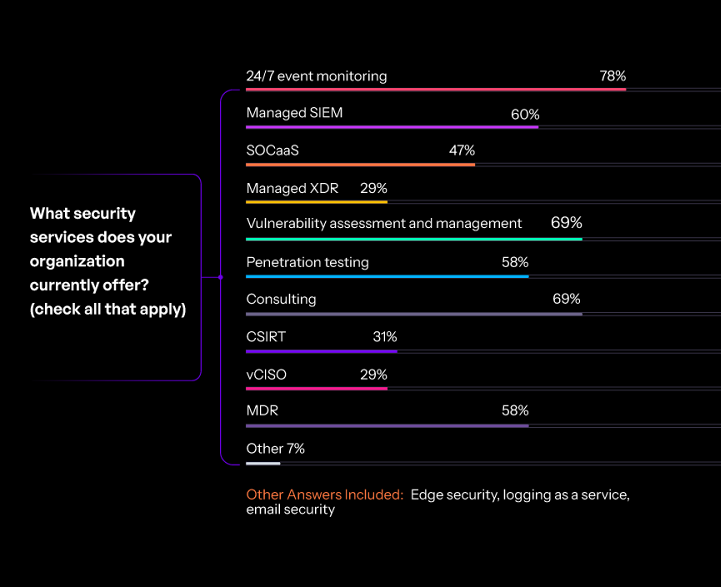
2024-11-5 04:11:49 Author: securityboulevard.com(查看原文) 阅读量:2 收藏
Protecting against cyber threats with limited resources presents an insurmountable challenge for most organizations. Managed security service models, including managed detection and response (MDR) and managed security services providers (MSSPs) are ready to fill that organizational gap, so that you don’t have to face cyber threats alone. This post provides a clear framework for understanding the distinctions between MDR providers and MSSPs, to help you make informed decisions about your cybersecurity strategy.
What is an MSSP?
Managed security service providers (MSSPs) are specialized companies that offer outsourced cybersecurity services. They emerged in the late 1990s, providing managed firewall solutions. These providers monitor and protect enterprise networks and endpoints. MSSPs have expanded their offerings to include MDR, managed extended detection and response (MXDR), cloud security, AI-driven threat detection, and compliance services. The global MSSP market is projected to reach $24.68 billion in 2024.
Here are some key services offered by MSSPs:
● Security event monitoring, which can range from basic monitoring to advanced offerings that include 24/7 support.
● Perimeter security, where MSSPs manage and audit firewall and intrusion detection systems.
● Vulnerability assessment and management, which involves regular scanning for weak points in the environment.
● Penetration testing, a simulated cyberattack aimed at identifying vulnerabilities in a system’s defenses.
What is an MDR?
Managed detection and response (MDR) is a specialized cybersecurity service focused on proactive threat detection, real-time threat hunting, and hands-on incident response. MDR providers work to identify and respond to cyber threats around the clock, often using a combination of advanced technology, skilled analysts, and automation to rapidly contain and mitigate attacks.
MDR emerged as a distinct service in 2015. The global MDR market is estimated to be worth $4.1 billion in 2024.

While there are specialized providers dedicated exclusively to MDR, MDR services are increasingly being offered by MSSPs. Our 2024 MSSP Survey found that 58% of MSSPs offer MDR services.
MDR vs MSSP: Key Differences
The key distinction between traditional MSSPs and MDR providers lies in their scope of response. MSSPs typically focus on monitoring and alerting, leaving the response actions to the client’s internal team. In contrast, MDR providers typically offer a full spectrum of response options.
| MSSP | MDR | |
| Operational Strategy | Reactive, relying on existing security controls for threat detection. Typically monitors and alerts, leaving the response to the client’s internal team. | Proactive and reactive. They are expected to hunt for threats before they become incidents, and respond to incidents post-breach. |
| Service Offerings | Broader range of services, including managed firewalls, intrusion detection, and vulnerability scanning. Many MSSPs offer MDR and MXDR services too. | Specialized in threat detection and response, combining proactive threat hunting and reactive monitoring. |
| Focus and Proficiency | More generalized approach to security management. | Primarily focused on cybersecurity. |
| Availability | Includes 24/7 monitoring services | While it is increasingly common, not all MSSPs provide 24/7 monitoring services. |
| Cost | Less expensive than MDR | More expensive than MSSPs |
Beyond the Labels: Key Factors to Consider
The trend of convergence between MSSP and MDR’s core competencies requires organizations to carefully evaluate providers based on specific service offerings and capabilities.
Expertise
MDR relies heavily on skilled security analysts, who are the heart of threat hunting and response. These analysts should be experts in threat intelligence, incident response, and forensics. MSSPs also require skilled personnel, but their entry-level offerings may be tiered, broader, and less specialized in threat detection.
Threat Intelligence Operationalization
Inquire about the provider’s threat intelligence capabilities. How do they gather, analyze, and apply threat intelligence to protect your business? Effective threat intelligence is essential for proactive threat hunting. MDR providers should actively use threat intelligence feeds to identify and anticipate emerging threats. For MSSPs, threat intelligence informs security policy configuration and strengthens incident response capabilities.
Measuring Performance and Value
Ask potential providers about their metrics program. What KPIs do they track, and how will they report on their performance? Both MDR and MSSP providers should be able to demonstrate their value through meaningful metrics, including threat detection and incident response times.
Communication and Collaboration
Effective communication is the bedrock for a successful partnership with any managed security provider. Choose a provider that exudes transparency and open communication, provides regular reporting and updates, and has clear escalation paths for security incidents.
Understanding Your Security Needs
Choosing between MDR and MSSP ultimately depends on an organization’s specific needs, resources, and threat landscapes. Before deciding, it’s best to have definitive answers to these questions:
● What are your critical assets and data?
● What are your biggest security concerns?
● What level of in-house security expertise do you have?
● What is your budget?
An MSSP is ideal when:
- Building initial security capabilities
- Working with limited security budgets
- Needing basic compliance and monitoring
- Having internal teams for response
MDR is preferable when:
- Facing advanced persistent threats
- Protecting highly sensitive data
- Requiring 24/7 expert response
- Having the budget for premium security
D3 Smart SOAR Powers Both MDR and MSSPs
D3 Smart SOAR enables people-focused automation, allowing MSSP and MDR teams to scale their capabilities and deliver better outcomes. For MDR providers, Smart SOAR helps them provide new services, achieve better analyst-to-customer ratios, and connect to any stack. MSSPs use Smart SOAR to grow their security service offerings, achieving interoperability with any product and confidently executing detection and response across diverse customer environments. Smart SOAR’s multi-tenancy, ease of use, and vendor-agnostic integrations make it the leading automation solution for MSSPs and MDRs looking to scale. Sign up for a demo to learn more.
The post MDR vs. MSSP: Making the Right Choice for Your Business appeared first on D3 Security.
*** This is a Security Bloggers Network syndicated blog from D3 Security authored by Shriram Sharma. Read the original post at: https://d3security.com/blog/mdr-vs-mssp/
如有侵权请联系:admin#unsafe.sh

